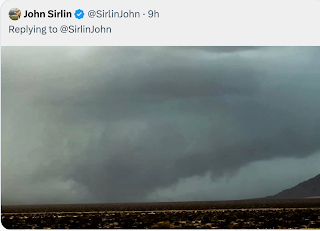Comparisons Between U.S. Hurricane Andrew to Philippines' Typhoon Haiyan
Hurricane Andrew is the most recent of the three category five hurricanes to ever strike the United States' coast. The hurricane (called a typhoon in the western Pacific) that struck the Philippines was also a category 5. Given the horrifying reports of damage and deaths from the Philippines, I thought it might be useful to compare the damage from Andrew and Haiyan.
Photograph of damage from Hurricane Andrew (from ebook version of Warnings: The True Story of How Science Tamed the Weather). Consider for a moment that Florida's building codes were designed to provide some level of resistance to hurricanes. While some of the homes were flattened, some were still structurally intact.
These photos are of the aftermath of Haiyan. While I have no knowledge of Philippine building codes, the damage pattern is similar.
However, this photograph from the New York Times' web site shows damage more similar to being covered by the storm surge as well as from wind. This is damage more associated with an F-4 or F-5 tornado than a hurricane.
The damage looks more like the Christmas tsunami of 2004. A storm surge is similar to tsunami.
There is one interesting coincidence between the two storms.
Typhoon Haiyan removed the radome (the white protective cover) and the radar antenna of one of the weather radars.
Again, from the ebook version of Warnings, this is the WSR-57 radar that was on top of the National Hurricane Center's building before Hurricane Andrew. It blew off the building during the hurricane. Radars are strongly constructed because, after all, their role is to be able to provide data during the worst of conditions. Both Andrew and Haiyan were extraordinary storms.
Based on the level of damage in these photos, I would not be surprised if the death toll exceeds the early estimates of 10,000 when reports are in from the entire island nation.
A first-person account of Haiyan is here.
If you wish to understand more about the incredible winds in one of these hurricanes, this is an excellent, and easy to follow, description.
Photograph of damage from Hurricane Andrew (from ebook version of Warnings: The True Story of How Science Tamed the Weather). Consider for a moment that Florida's building codes were designed to provide some level of resistance to hurricanes. While some of the homes were flattened, some were still structurally intact.
These photos are of the aftermath of Haiyan. While I have no knowledge of Philippine building codes, the damage pattern is similar.
However, this photograph from the New York Times' web site shows damage more similar to being covered by the storm surge as well as from wind. This is damage more associated with an F-4 or F-5 tornado than a hurricane.
The damage looks more like the Christmas tsunami of 2004. A storm surge is similar to tsunami.
 |
| Wikipedia |
Typhoon Haiyan removed the radome (the white protective cover) and the radar antenna of one of the weather radars.
Again, from the ebook version of Warnings, this is the WSR-57 radar that was on top of the National Hurricane Center's building before Hurricane Andrew. It blew off the building during the hurricane. Radars are strongly constructed because, after all, their role is to be able to provide data during the worst of conditions. Both Andrew and Haiyan were extraordinary storms.
Based on the level of damage in these photos, I would not be surprised if the death toll exceeds the early estimates of 10,000 when reports are in from the entire island nation.
A first-person account of Haiyan is here.
If you wish to understand more about the incredible winds in one of these hurricanes, this is an excellent, and easy to follow, description.









Amazing photograph from the New York Times showing the storm surge damage. I do feel the constant comparisons between EF4/EF5 tornadoes and this typhoon are a little out of place (being that the motion of tornadic winds makes them far more destructive), but this storm was certainly a monster.
ReplyDeleteMy personal guess based on James Reynolds footage and damage shots is that Typhoon Haiyan brought borderline Category 5 winds to Tacloban - maybe sustained around 150 to 155mph, and potentially sustained winds greater than 165mph to some of the offshore islands to the east (where I have seen no damage images as of yet). But like Hurricane Andrew, the hurricane may have had convection cells/mini-swirls that brought gusts in excess of 200mph in some areas - particularly mountain ridges near the coast.
More money and time is spent preparing, cleaning and rebuilding than it would cost to change building code so evacuation become obsolete. Why prepare for what you can prevent?
ReplyDeleteWith Natural Disasters we loose, economical stability, social equality, a sustainable infrastructure, while increasing the strain on our natural resources, razing insurance cost, and endangers one's the civil liberties.
Thereby, Building Code Reform backed by those that see FIRST HAND the "After affects" of said disasters would insure for future generations; economical stability, social equality, a sustainable infrastructure, reduce the strain on our natural resources, lower insurance cost, while protecting the civil liberties of ALL the world's people. "Natural Disasters are Natural, So why do they have to be a DISASTER!" GIVE THE VICTIMS A VOICE, MAKE CHANGE"
"Be an Anomaly, don't just think out of the box, think out of the circle." 'StonewallMary'
http://buildtoflowwithnaturenottoresistit.blogspot.com/